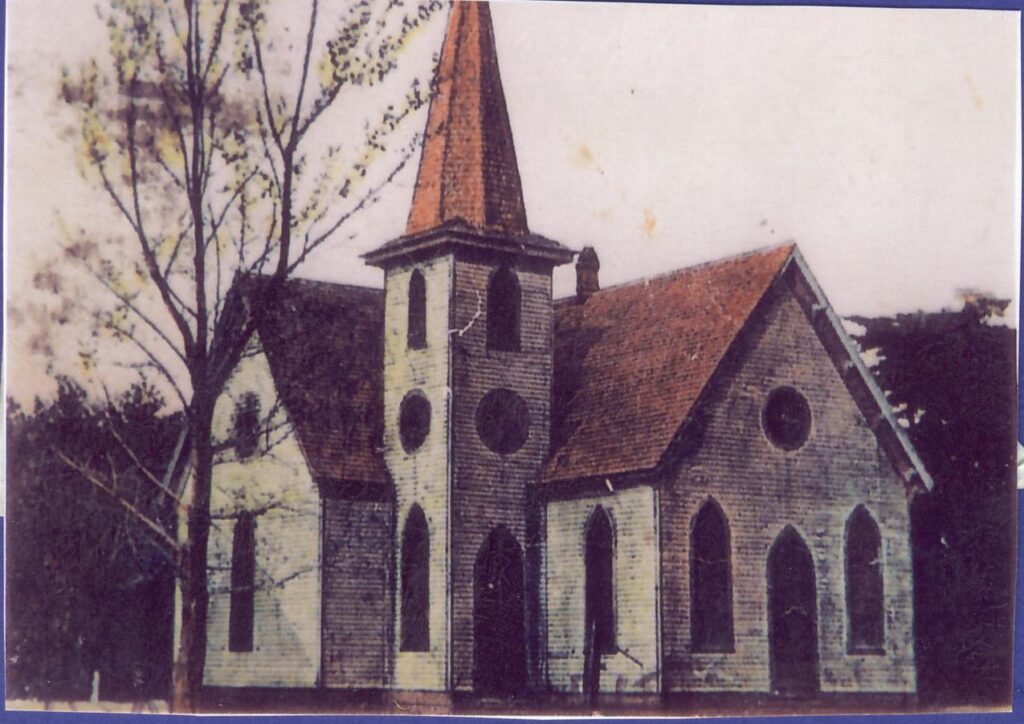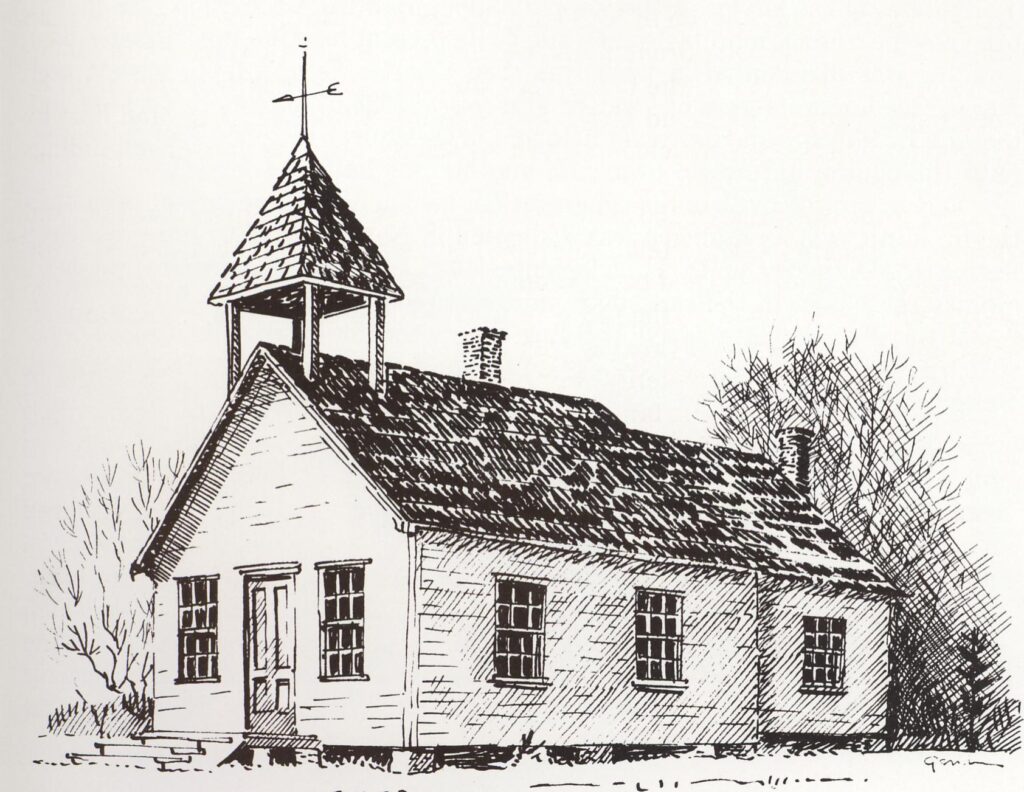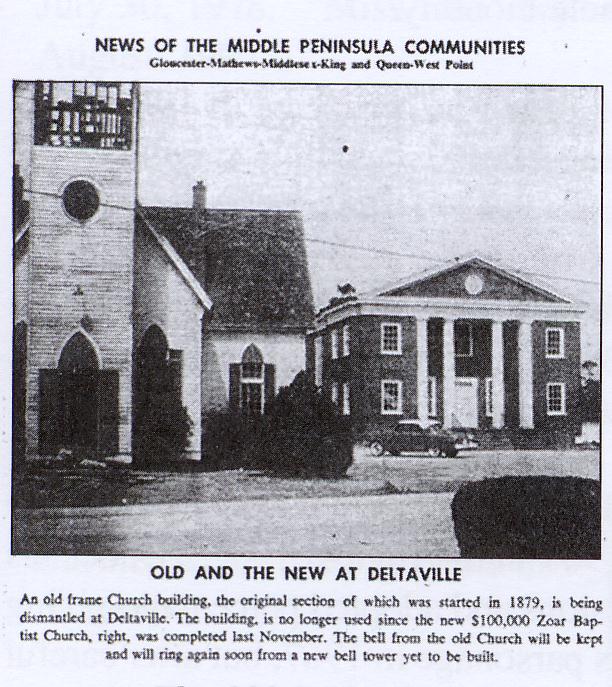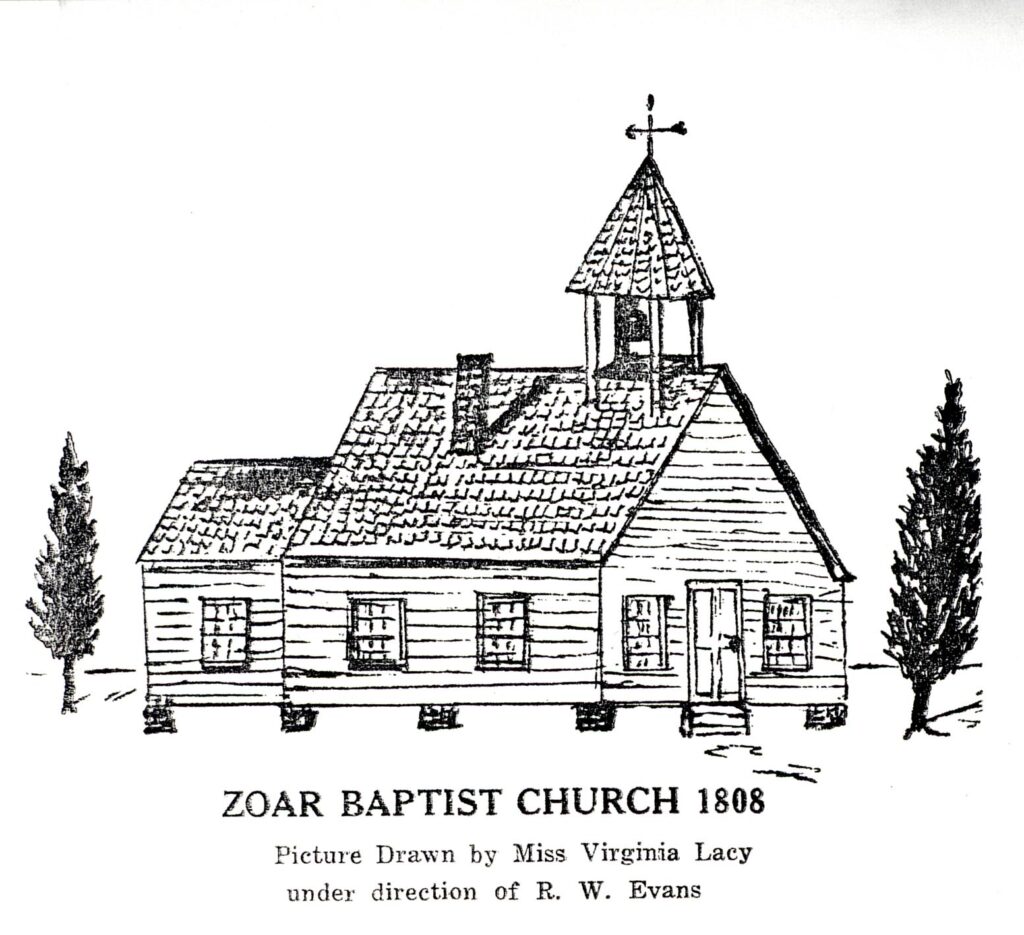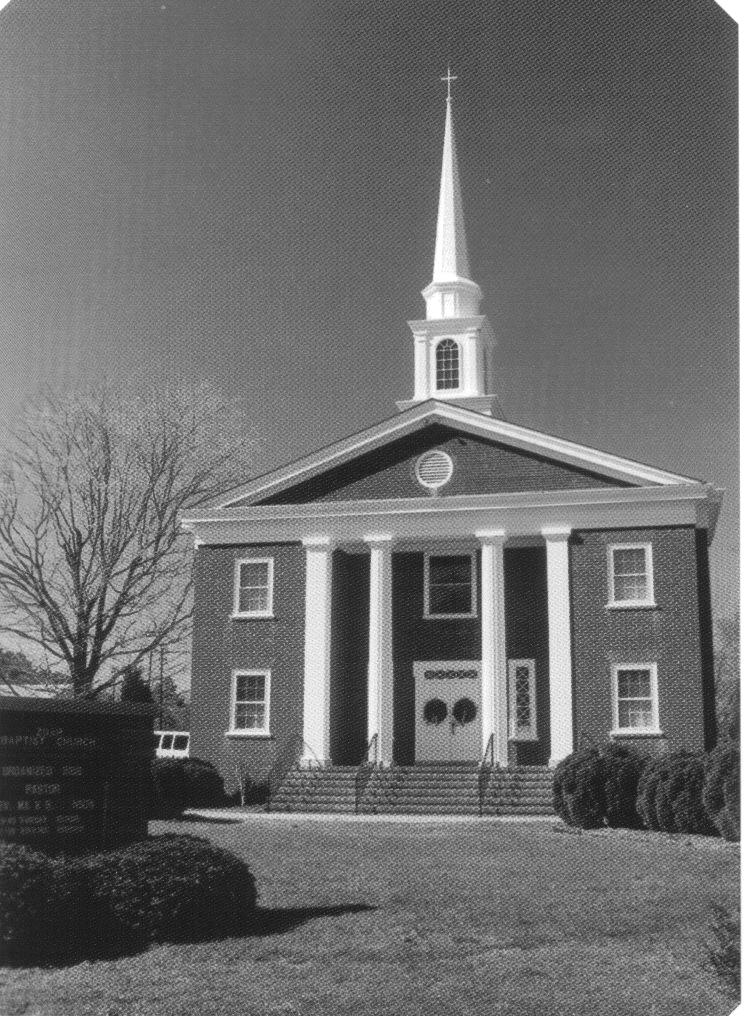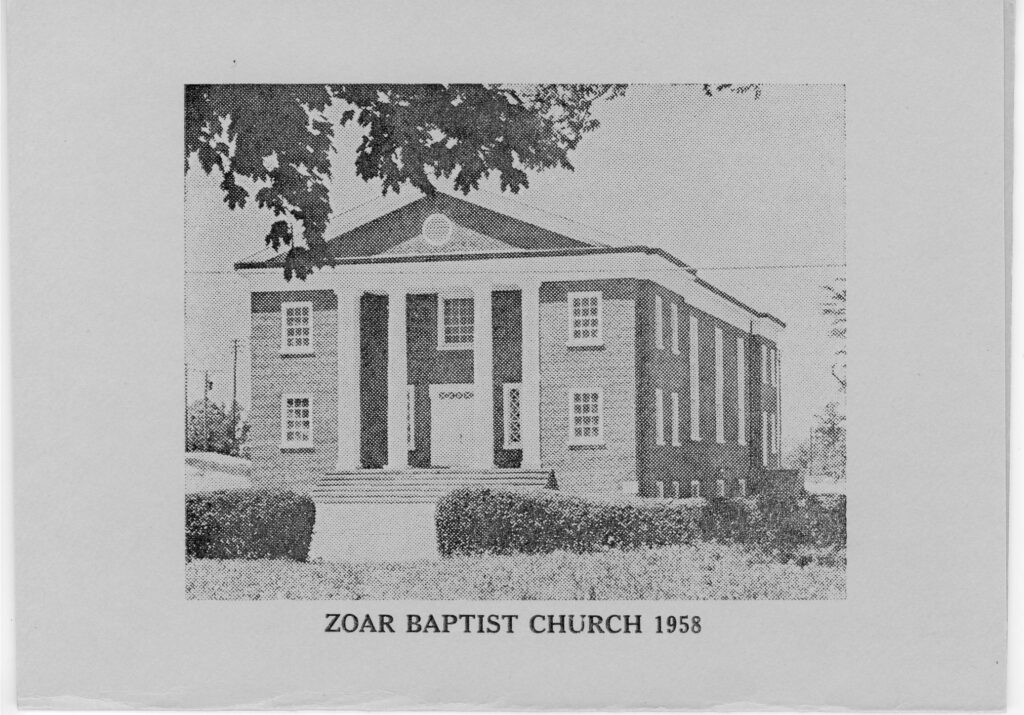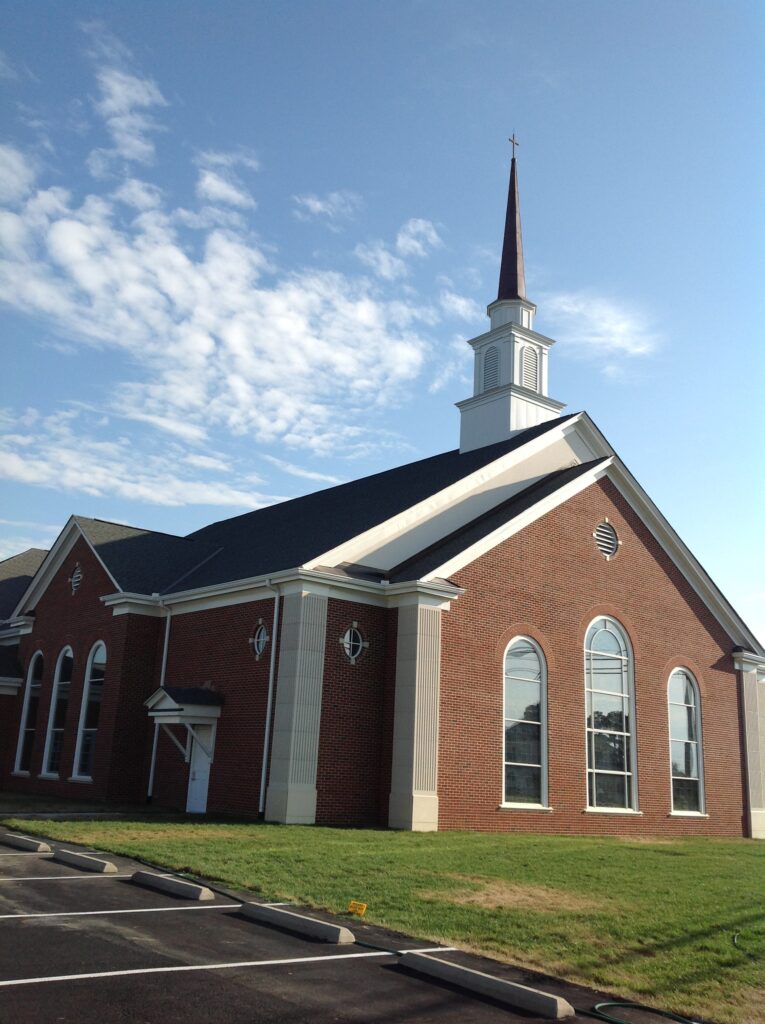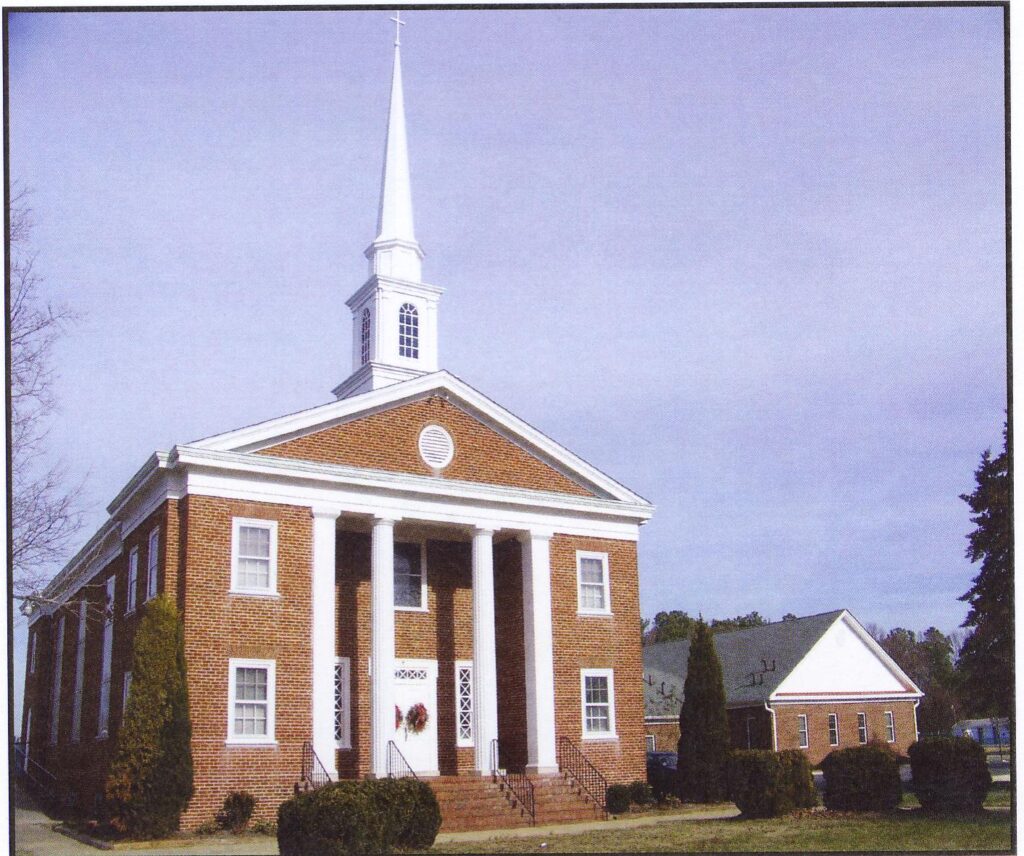
Share This Article On Social Media:
Explore Similar Categories:
1808 – 2008
Zoar Baptist Church was constituted on November 4, 1808 when members of Hermitage Baptist Church living in the lower part of Middlesex County felt an impelling need for a church in their own area. Hermitage recognized the situation as an opportunity for more effective service, and by church action dismissed about 100 persons for the express purpose of organizing a meeting house in Lower Middlesex, about twenty miles away.
Early records listed the following white members named to start the new church:
MALES
Bristow, Leonard, Deacon
Boss, James
Cory, David, Pastor
Clark, Spencer
Clowdas, John
Elgar, Samuel
Humphies, Nelson
Mountain, John B.
Seward, Edward
Wood, Samuel B., Deacon
Wood, William
FEMALES
Bristow, Lucy
Boss, Susannah
Cory, Nancy
Elgar, Dorathy
Garton, Elizabeth
Healy, Frances
Mountain, Elizabeth
Seward, Avey
Steavans, Elizabeth
Wood, Frances
Wedmore, Sarah
The remaining membership consisted of approximately 80 black men and women whose names unfortunately were not recorded.
The first pastor, Elder David Corey, came from New England to Virginia early in life. Having felt a call to the ministry, he became an itinerant preacher in eastern Virginia before coming to Zoar. After his death in 1809 the church was without a pastor for several years.
Elder John Healy was called as pastor around 1813 and served until about 1816. There was a period of about three years when the church was without a pastor. During this time the church was supplied on numerous occasions by Elders James Healy and Phillip T. Montague.
The strength and stamina of Zoar as a church seem to have gradually declined from the date of its constitution until the year 1817. In that year there was only one white member, Major Thomas Healy. At the request of the church, the Rappahannock Baptist Association in 1818 appointed a committee to consult and try to determine a solution to the depleted membership. The committee advised that the constitution be dissolved and that the remaining members re-unite with Hermitage Baptist Church. Major Healy, however, was unwilling to see the church discontinued. Through much personal effort and with the aid of some brethren from Mathews County, he procured the services of Elder George Northam of Accomac County. His pastorate began in 1820 and lasted more than a quarter of a century. The period between 1831 and 1838 saw several very successful and far-reaching revivals held at Zoar. The membership was tremendously increased, and the outlook for the church became brighter.
The history of Hermitage Baptist Church Middlesex County 1789 -1976, written by Edward M. Trice, gives a wealth of information on George Northam. He was born September 15, 1793 and moved to Middlesex County in 1819. His father, being fond of the fiddle, gave young George one at an early age. He became an accomplished musician and participated in Saturday night parties. He became convicted of his lifestyle and was converted at an early age. Shortly thereafter he began holding prayer meetings in his neighborhood. He was later licensed to preach and ordained in 1818. He became pastor of Hermitage in 1836 while still serving Zoar. He resigned from Zoar in 1847 and from Hermitage in 1848, after which he went to the Northern Neck as pastor of Nomini and Menokin. He died November 28, 1854.
There is no record of where Zoar members initially met for worship. On October 22, 1836, John R. Taylor gave one acre of land to Zoar. It is believed that the first church building in the lower part of the county was constructed on that lot in the present day Hardyville area. Between 1838 and 1847 Zoar built two new houses of worship. In addition to the one in the lower part of the county, another was built ten miles distant near the present intersections of Routes 3 and 33. The land for this church that became Harmony Grove was known as “The Trap” and was given by Samuel Blake. Zoar granted 124 letters of transfer to this new church.
Elder R. A. Christian became pastor in 1848. The first extant minutes of a regular church business meeting began with the year 1850 under Pastor Christian’s leadership. About this time a “Sabbath School” was in operation both at Zoar and at Harmony Grove. On February 22, 1851 teachers were appointed for both Zoar and Harmony Grove Sunday Schools. Harmony Grove Baptist Church became constituted on March 24, 1859.
The church discipline of this period was very rigid and exact. It was stern in action as well as by creed or stipulation. At each business meeting the church roll was called and everyone not present was required to later “answer for his absence”. Discipline to the point of exclusion from fellowship was practiced for persistence in the use of profanity, intemperance, fighting, holding parties, dancing, difficulties between members, and other breaches of professed Christian conduct.
After nine years of service as pastor, Elder Christian resigned because of ill health. He served at an annual salary of $150 and even this amount was difficult to raise for several years. This in no way reflected upon his performance. He was held in highest respect, and formal resolutions for his faithful services were adopted December 20, 1856 while the church was still financially indebted to him.
Elder Holland Walker, who had been acting as Assistant Pastor the last years of Elder Christian’s pastorate, was called as pastor for Zoar and Harmony Grove Churches in February, 1857. He accepted for one year at a salary of $300. At the end of that year the membership insisted that he continue as pastor, and he agreed.
In 1859, Zoar “ordered Richard A. Davis, Hiram Walker, and William P. Vaughan, trustees of Zoar, to make a deed to John B. Blake and James Archer Eubank, deacons and trustees of Harmony Grove, to the house and land known as Harmony Grove”.
The Civil War was a most difficult period for the church. Depression and want showed themselves on every side, and the church was brought low in many respects. Pastor Walker was faithful to every trust throughout this time as he served Zoar and occasionally served Harmony Grove Baptist Church. In 1864 his salary was given in the minutes as $800 per year.
On June 22, 1867 the “colored members of Zoar requested and received permission to form their own church”.
Elder Holland Walker tendered his resignation in January, 1870. Elder Mark William Towill who owned North End Plantation had acted as assistant pastor and was asked to preach “whenever it was convenient” for him.
Elder W.W. Wood was called as pastor of Zoar and Harmony Grove Churches November 5, 1871 at a salary of $400 a year. He was paid $100 per quarter to preach one sermon per month at each church. His pastorate closed in the latter months of 1872.
Zoar then called Rev. John W. Ryland, who was also serving Hermitage, to preach the “the second Sabbath day in each month” at a salary of $100 per year. This was in 1872, and he served for two years.
Elder M. W. Towill “who had been preaching whenever it was convenient for him” for a number of years was unanimously elected pastor of Zoar in December, 1874. He resigned in July, 1878 but the church did not accept his resignation until March, 1879. The minutes of January, 1877 show that Brother Towill had been paid $100 per year in four equal installments in the past, but that he agreed to accept the pastorate with no specified salary. The Treasurer’s report later showed that he was paid $57.45 for the year. He died in Middlesex County and is buried on a farm at Wake, Virginia. His obituary gives us a glimpse of an early leader at Zoar. It reads:
Elder Mark W. Towill was born in the county of Lancaster, Aug 17th, 1817, and fell asleep at his home in Middlesex July 18, 1887, having nearly reached his threescore years and ten. Bro. Towill was ordained to the gospel ministry at the call of “Old Matthews Church,” which he served quite successfully for many years. The church then flourished greatly under his pastoral care, and his memory is held in high esteem by them yet. He was next pastor of Zoar, which he served quite acceptably for a long time, and of which church he was a member at the time of his death. At his own request, notice had been given that he would make an appeal for the “ministers’ Relief Fund” at Zoar Sunday, July 17th, the day before he died. The last time he ever attended Divine service, the 3rd Lord’s Day in June, he made, at the conclusion of the sermon, a very warm, impressive exhortation to the young men of the congregation to seek peace with God – many of whom were moved to tears. This was the last time Bro. Towill ever spoke to a public assembly. Here his labors closed. Bro. Towill was a model husband, father and neighbor of a generous nature, full of zeal and earnestness. He leaves a wife and six children to mourn for him, but not without hope, for they hope to meet him “when this weary life is over.”
After the acceptance of Towill’s resignation in 1879, James Reister and Holland Walker filled the pulpit occasionally for some months.
Following the advice of the Rappahannock Baptist Association, the church was moved in 1879 from the site in Mr. Charles Selby’s field in Hardyville to a new site near its present location near Deltaville. The Zoar “meeting house” was dismantled in Selby’s field about August in 1879, moved to “New Market” and put up near its present site about October. It was completed and ready for use by December, 1879 at a cost for moving and constructing of $398.07. The land on which it formerly stood was sold to Charles Selby for $25. One half acre of land was acquired by Zoar from George W. Nelson on August 24, 1870. An additional half acre was donated by James H. Jackson and his wife Edith P. Jackson on November 12, 1880. The church purchased another half acre from them on October 10, 1908, for $100.
Shortly after the church moved it called Elder Julian Broaddus as pastor. He served several months in 1880 while simultaneously serving Clark’s Neck and Harmony Grove churches.
In May, 1881, Zoar called Rev. R.A. Folkes as pastor. He served the congregation faithfully and well through ten prosperous years for the church.
The Woman’s Missionary Society was organized at Zoar in 1887 under the direction of Mrs. R. A. Folkes, wife of the pastor. “The Ladies Missionary Society” started with 40 members and half of them were men. By 1912 only females are listed on its roster. By 1913 this group was giving to home, state and foreign missions. Fund-raising activities at that time included ice cream socials, strawberry festivals, entertainment activities, and the making of quilts that sold for $4.00 each. By 1949 the ladies of Zoar were saving a penny a day with a prayer plan for missions, and they were gathering hens to ship to Baltimore each March.
In the 1970s the Ladies Missionary Society became the Women’s Missionary Union. Their focus continues to be on prayer and contributions to missions.
The Sunbeam Society was also organized in 1887, and in the early thirties The Girl’s Auxiliary, Royal Ambassadors and Young Women’s Auxiliary came into being. All of these were under the leadership of The Ladies Missionary Society. Later the Royal Ambassadors were led by the Men’s Brotherhood. Over the years the names changed and these groups had a long history of active church and community involvement.
The building, reconstructed in 1879 was scarcely finished before the growth of the congregation was calling for a more commodious building. In 1890 the job of enlarging the building was started under the leadership of Rev. R. A. Folkes, with Brethren Vaughan, Hardy and Jackson constituting a Building Committee. They were authorized to spend as much as $1,000 in making the needed improvements.
Rev. Folkes resigned in October, 1890, effective at the end of the year and recommended Rev. J.K. Faulkner as pastor. Brother Faulkner was called for the year 1891 for one-half time at $225 a year. He introduced the church envelope system in 1891 as a means of facilitating the collection of church funds.
On October 17, 1891 the cornerstone of the new church was laid and on the first Sunday in November, 1891 the building was dedicated. At the time of the dedication of this building the trustees of Zoar were: Thomas A Saunders, D.A. Taylor, and John L. Hardy, Jr.
In December, 1891 Rev. L. C. Brickhouse was called as pastor, and he began his services in January, 1892. He was called at a salary of $175 a year with living quarters to be furnished free. This is the first reference to providing a home for the pastor. At the business meeting in January, the pastor’s salary was raised to $200. Under Rev. Brickhouse’s leadership a revival meeting that began on the fifth Sunday in July, 1892 added 39 members to the church. In December, 1892 the envelope system which had been used intermittently since its inception was revived, and pledge cards to raise money for church support were added.
The value of the church lot, building and furnishings was listed in 1893 as $18,511. There was still debt on the church, although the church seemed to flourish during the pastorate of Rev. Brickhouse. He submitted his resignation in August, 1894 and left Zoar three months later.
On February 24, 1895 Rev. C. R. Moses was recommended as pastor of Zoar. He preached there the first Sunday in March, accepted a call and became pastor April 6, 1895. During his first summer a memorable revival was held with Rev. W. T. Jolly of Richmond preaching. They had a service in the morning, lunch was served to everyone on the premises, and there was a second service in the afternoon. This revival has been labeled a red letter day or period in the history of the church because it resulted in a large number of professions of faith. Many additions were made to the membership, and there was a general religious awakening of the community. Rev. Moses served with increasing effectiveness until June 30, 1900. At that time he resigned to take up educational work. It was near the end of his active and useful ministry that a resolution carried five to two on January 6, 1900 “That we will not hold in membership any member who is able to pay and will not pay their dues to the church.” One can but ask and wonder, in looking back, who would have been in a position to have determined the exact financial status of his fellow members.
On July 1, 1900 Rev. A.T. King, a young, talented preacher and teacher, began his services as pastor of Zoar. His ministry lasted for two years and one month and was marked by many noble accomplishments in the work of the church. During this period there was an exception revival, the third one to this point in the church’s history. Many good decisions were made for the church as well as the community being tremendously spiritually uplifted.
On October 5, 1901 the regular “Discipline Committee” of the church was dismissed but the work they had been doing was not to be forgotten or left undone. By action of the church at that time the work of looking after the conduct of the members was passed on to the “Board of Deacons” who constituted the new committee for handling all matter of church discipline.
Prior to 1901 the use of the envelope system had been discontinued as a means of collecting the “funds of the church”. On April 21, 1901 a motion was recorded “that we go back to collecting the pastor’s salary by the envelope system”. At this same meeting the treasurer was asked to “look into buying duplex envelopes with cards for the members to pledge what they can pay.”
Rev. H. L. Corr began his work with Zoar as a supply pastor on September 1, 1902. He was ordained to the ministry and called as pastor on August 3, 1902. He accepted effective January 1, 1903. In early 1903 the envelope system for collecting church funds was stopped, and the church returned by vote to the old assessment plan. It is interesting to note that in addition to Zoar’s church expenses, the following collections taken at that time:
On July 29, 1908 the Rappahannock Baptist Association met with Zoar for the second time in the history of the church. The earlier meeting was held just ten years prior on July 27, 1898. The second meeting was significant because it was to commemorate the 100th anniversary of the church. Serving on the Hospitality Committee for this meeting were: John Hardy, E.W. Bristow, W.R. Evans and Lynn Jackson. The committee to clean up grounds and erect tables was: F.E. Topping, R. C. Harrow and G.L. Hardy. The pastor, H. L. Corr, was responsible for arranging the Centennial Program and securing speakers. R. E. Fox, C. Blake and Talmadge Graham made up a committee in charge of the sale of refreshments with the intended proceeds to go toward defraying the expenses of “fixing up well”. It is interesting to note that when the Association meeting was over and an accounting was done, the church was $56.47 in the red.
Rev. H. L. Corr served the church well for nearly nineteen years. He resigned because he felt he should retire to a ministry less demanding and exacting on his strength. He stated that his work at Zoar was carried on mostly from his home many miles distant in Gloucester County. At that time the Piankatank River Bridge had not been constructed, and he was traveling by horse and buggy from his home near White Marsh. He would only stay overnight in Deltaville if his host had food for his horse.
After a period in which several supply ministers came to Zoar, the next regular pastor was Rev. L.D. Craddock who came in 1923. He served capably for a comparatively short time and then resigned for personal reasons to go elsewhere.
He was succeeded by a young minister, Rev. Raymond Wreath, who remained only a short time.
In 1928 the church called another young minister, Rev. P.H. Clements. He married a church member, Naomi Jackson. He was active and energetic in getting the church to make advancements. Among the improvements made during his tenure as pastor were the enlargement of the Sunday School classrooms, the addition of balconies and perhaps the two-story addition to the back of the old frame building. Also, during his pastorate new pews were purchased and put in place of the chairs in the church auditorium. The records of the church for this period are not available, and several dates are uncertain. After doing excellent work, Rev. Clements left Zoar in 1932. Near the end of his period of service to the church, the envelope system was re-adopted as a means of meeting the financial demands of the church.
At a church business session on December 4, 1934, a call was extended to Rev. H.B. Lamb. He accepted shortly thereafter. It was at this same meeting that plans were laid for a complete canvas of every member.
According to church records, the first deaconesses were appointed at the meeting of October 3, 1936. Their ordination took place on February 6, 1938.
Rev. Lamb resigned and ended his work as of December 31, 1936.
Minutes of the April 3, 1937 business meeting show the beginning of the present parsonage. Prior to the time that the building was completed, the pastors had been furnished “rented homes at the expense of the church”. Rev. R.E. Dunkum, called as pastor on September 12, 1937, was the first pastor to occupy the new parsonage after initially being furnished a rented house.
There are no firm records of when the Baptist Young People’s Union was organized. However, the Baptist Training Union was in full operation with Junior and Senior Units in 1938.
Rev. R.E. Dunkum left at the end of July, 1939, and Rev. A.I. Caudle was extended a call November 19th of the same year. He accepted and entered upon his ministry at Zoar on January 1, 1940. It was during his ministry that the church voted on September 19, 1940, to adopt the budget system as a means of managing finances. All means of raising money except by direct contribution were discontinued. The first budget, accepted November 17, 1940, totaled $1,516.
On January 4, 1941 the church adopted a system of rotation of deacons and deaconesses. By the plan accepted “no one was to succeed himself after three years service.”
Rev. Caudle submitted his resignation in May, 1941, and Rev. Bernard Mullins was called as pastor on July 27, 1941. By this time the condition of the church building was beginning to attract attention. On April 4, 1942 a committee was appointed consisting of two trustees, Brethren R.E. Fox and J.T. Saunders. The other members were Mrs. M.A. Jackson and R.W. Evans. They were charged with the duty of making an estimate of the cost of repairs to the church which would make it more comfortable and more attractive. This action and consequent renovation resulted in removing the steeple, running chimneys on the east and west of the church, building a vestibule on the front, putting on a new roof and painting the building.
The work of Rev. Mullins ended February 21, 1943, and Zoar was without a pastor for only a few Sundays. The pulpit committee quickly succeeded in securing Rev. Goodwin Frazer who started his work by preaching morning and evening the first Sunday in April, 1943. It was during his ministry that Mr. and Mrs. William Marchant donated the baptistery in memory of their son, William Scrimger Marchant, who lost his life June 10, 1944 in the service of his country. It was also during this period that the cemetery at Zoar was established in the early months of 1945.
Rev. Frazer and his family were granted letters of dismissal on May 27, 1945. The church continued with supply ministers for a large part of two years. Near the end of 1946 Rev. R.O. Reamy was called as pastor and began his ministry on January 1, 1947. During his ministry the Hammond electric organ was installed. The need for more space and for renovating and remodeling the church building once again became imperative. Many plans were laid for redecorating the interior of the old building and adding additional rooms on the back, together with putting on a new roof. Soon after these plans were approved by the church, the Berean Sunday School Class passed a resolution asking that the Church seriously consider erecting a new building instead of spending a large sum in renovating and remodeling.
At a called church business meeting after the regular church service on April 14, 1949, Rev. Reamy tendered his resignation. It was accepted with regret to become effective May 26, 1949. Rev. Reamy presided at another called business meeting after the prayer service May 17, 1949. The purpose of the meeting, as stated in the minutes, was to accept or reject the recommendation of the Berean Class:
“That the repairs on the church be withheld and that a new structure of brick be built in units on the present site, the first unit to be an auditorium.”
After considerable discussion, the motion was made and carried that the recommendation be accepted. A Building Fund was also established at this meeting with $1000 transferred from the general fund of the church. This represented the first substantial amount contributed toward a building fund. At first plans were considered for a building costing about $25,000, but as time passed the cost expectation was expanded upward until it more than tripled.
The church was without a pastor until June 1, 1950, when the ministry of Rev. G.H. Lawrence started. It was during his ministry that the Building Committee, the Finance Committee and the Church Furnishings Committee were selected and approved by the church. These committees carried through until the new building was completed and dedicated, after which they were discharged with the exception of the Finance Committee.
Printed church bulletins were first used in 1950.
On February 11, 1951, Edward P. Harrow was licensed to preach by the church.
At the morning service February 10, 1952 Rev. Lawrence submitted his resignation, effective March 16, 1952. It was accepted with regret.
Again, the church was without a pastor for a long period, for it was not until July 1, 1953 that Rev. I. Ray Baker took over leadership. He immediately undertook the building of a new church. A ground-breaking service was held August 9, 1953, and the cornerstone was laid August 22, 1954. The building went forward rapidly under the general direction and leadership of Rev. Baker with R. E. Fox as General Building Chairman, and J. H. Southall as Construction Chairman. A. W Hall was the builder. A great time of rejoicing was experienced when the new building was dedicated November 6, 1955. There were three services that day with the actual dedication taking place in the afternoon.
At a called business meeting May 17, 1953, Walter Allen Harrow, Jr. was licensed to preach.
At the regular meeting April 2, 1954 the church accepted the offer of Mr. and Mrs. W.F. Marchant to install a Memorial Window in the baptistery of the new church in memory of his son, William, who was killed in the second World War and had been memorialized in this way in the old church.
On August 10, 1955 a special business session of the Church was called to consider a resolution prepared by the Berean Class of the Sunday School. The resolution, read by the pastor Rev. Baker, recommended, “That serious consideration be given by the Construction Committee to installation of air conditioning in the new building while it was still in the process of construction”. After some discussion the motion was carried and plans were made that eventuated in the installation of an air conditioning system. At this same meeting it was decided to make the window over the entrance to the building a memorial to the entire Zoar membership.
In April, 1957 Perkins Baptist Church in Goochland, Virginia requested that Zoar ordain Walter Allen Harrow, Jr. to the Gospel Ministry. This impressive service setting him apart for the Ministry was the first such service in the new building.
Rev. Baker terminated his service at Zoar December 31, 1957. The church carried on with supply preachers until July 1, 1958 when Rev. James H. Ware began his ministry.
In November of 1958 this church that had almost disbanded in its infancy, celebrated its 150th anniversary. The occasion was marked by special services and A Brief History of Zoar Baptist Church written for the Sesquicentennial Celebration.
Around 1959 Zoar joined approximately twenty-two other Baptist Churches to begin forming a new Association to be named Mid-Tidewater Baptist Association.
Rev. Ware resigned in August 18, 1960, and Rev. W. E. Thompson began his service on May 1. 1961. During his time at Zoar the church began holding quarterly business meetings. Previously they had been held monthly.
The Men’s Brotherhood of Zoar was organized in 1962. This mission organization continues and is active in the life of the Church.
In August, 1963 Zoar celebrated repayment of the debt of building the sanctuary in 1953-1955 with a note-burning service. The cost of the new sanctuary was approximately $90,000.
Rev. Thompson resigned in July, 1963. He was followed by Rev. Donald Tillotson, who was pastor from 1964 until August, 1967. Under his direction the church held several Schools of Missions and adopted percentage-giving to the cooperative program. Zoar voted to sell its parsonage in 1967, but after careful consideration elected to have it repaired.
Two noteworthy events transpired in 1967. A church library was established, and a church sign was erected on the front lawn.
Rev. Charles Jenkins began his ministry as pastor in the 1968. During his leadership a Junior Board of Deacons and Deaconesses was reestablished, and on January 14, 1970 the amount given to the Cooperative Program was increased to 20 percent.
On September 16, 1970 a previous minister, Rev. Ryland O. Reamy was called as interim pastor. Highlights of his time at Zoar include the implementation of orientation for new and prospective members, the hiring of a part-time church secretary, and the placing of the Religious Herald in the home of every member.
In 1971 Rev. Charles M. Moody arrived as pastor of Zoar, and he served until 1984. He was recognized with a reception by the congregation after he had served ten years. Under his leadership, Sunday worship services were begun on the beach at Stingray Point. The first service was on June 18, 1972.
Mrs. Nan Harrow served faithfully as church organist for many years. She was recognized with a reception in 1975. By July, 1977 the “New Organ Fund” had reached $6,000. Mrs. Harrow, Chairman of the Music Committee, recommended the purchase of a new Allen digital computer organ which was purchased the next year for approximately $14,000. A recital was held on July 9, 1978, and a dedication service was held on July 30, 1978. “Miss Nan” continued to serve as organist for 54 years, retiring in August, 1997.
A College Scholarship Fund begun at Zoar was in 1977. This fund was established in memory of Beverly Reamy Harrow and continues to assist young scholars.
The first edition of the church newsletter was published in July, 1978.
Upon affirmative vote of the church in November, 1978 a recommendation was accepted from the Music Committee that choir directors for adult and youth choirs be employed. In later minutes Brenda Burtner and Glenn Burtner were listed as choir directors.
At a called business meeting in July, 1979 a recommendation was passed to rent the church parsonage to Village Nursery from September-May, 1979-1980. The rent was $50 per month with the nursery school responsible for extra insurance and other expenses for improvements. They were still renting it two mornings a week in 1983 for a fee of $100 per month. The church reserved the right to use the parsonage at other times.
The first pictorial church directory was approved in 1979, and a contract was made with Olan Mills Studio to provide it.
By action of the church on September 10, 1980, St. Therese Catholic Church, Gloucester, was granted permission to offer mass at Zoar once a month on a Saturday night through the month of May, 1981.
In July, 1981, a recommendation from the Long-Range Planning Committee regarding the planning and construction of a steeple and bell tower was approved by the Church. It was decided to replace the roof at the same time at a total cost of approximately $25,000. The steeple was erected and dedicated in 1983. Members were offered the opportunity to acquire slate from the old roof before it was sold.
Robert Mobley began serving as interim pastor in May, 1984 and filled that position until September 22, 1985.
Rev. C. T. Edmondson, Jr. accepted a call as pastor and began his duties February 1, 1986. Since the parsonage was under renovation, the church rented the Dudley Montgomery home for the pastor’s use. The Edmondson family occupied the parsonage in December, 1986.
In July 1988 Rev. Edmondson announced that Glebe Landing Baptist Church had called Edward Harrow, Sr. as pastor and had requested that he be ordained as soon as possible. At Mr. Harrow’s request, the church approved holding his ordination at Zoar. The ordination service was held October 2, 1988.
At a called business meeting on November 30, 1988, the church approved a recommendation from the Building and Grounds Committee for work on the entire main floor of the church. This included painting, installing new carpet, and installing slate on the floor of the foyer at an estimated cost of $11,000.
The Watchcare Program was begun in 1989. At that time it was implemented to receive members of other Baptist churches who had been baptized by immersion into fellowship under Watchcare in particular circumstances.
In 1989 a reconditioned Steinway grand piano previously donated by Edwin Ruark and brass chandeliers given by anonymous donors were installed in the church sanctuary after approval by the church. A watch given by Zoar to Roland Evans in 1952 was presented to Robert Faulkner after Mr. Evans’ death. It was placed on display at the church.
Funds budgeted in 1989 for representatives to attend the Southern Baptist Convention were reallocated for attendance at the Virginia Baptist General Association meeting in Salem, Virginia. A motion was carried for up to fifteen messengers to attend.
Rev. Edmondson announced his resignation in September, 1990 to be effective at the end of November. John Tubbs was called as interim pastor by a vote of the church on October 20, 1990 and served until 1992.
In 1991 a need was recognized by the Church for additional Sunday School classrooms. This need was resolved by purchasing folding dividers for the fellowship hall to create two more classrooms at a cost of approximately $8000.
Wednesday family nights at the church were initiated by Rev. Tubbs in January, 1992. The original schedule provided for a family meal and half-hour prayer service with an additional hour allowed for all committees and organizations to meet. Choir practice followed these meetings. Initially, a cook was hired and the cost of dinner was $3.00. Later, teams volunteered to prepare the meal, and today the meals are provided by a caterer.
Rev. Mark Johnson accepted Zoar’s call as pastor in January, 1992, and his family was welcomed with a reception. His wife, Janell Johnson, was ordained and licensed at Zoar on March 31, 1993. She served as part-time associate pastor. Under their leadership an early contemporary worship service was begun. They served until Rev. Janell Johnson was offered a position to teach at Mercer University in Macon, Georgia. The Johnson family was recognized for their contributions to Zoar in July, 2000.
In 1993 Walter Allen Harrow, Jr., a product of Zoar Church, was elected president of the Baptist General Association of Virginia.
A Long-Range Planning Committee presented their report to the Church in 1994. The theme, Lighting the Way With Love, focused on eight areas of ministry and facility needs to be addressed in moving into the 21st century. Once again, Zoar church members realized a need for additional education and fellowship space. In October, 1995 recommendations of the Strategic Planning Committee of Zoar Baptist Church were adopted by the Church. Responsibility for implementation of these plans was given to Church Council.
In 1993 a fund was started to purchase hand bells. By 1996 the fund had reached $3401, and the Church authorized purchase of the bells.
At a business meeting in May, 1996 the minutes noted that “this was the first time in Zoar’s history that a business meeting of the church was presided over by a woman”. That woman was Mary Sealey, chairperson of the deacons.
Lightning struck the church on July 18, 1996, setting it afire. A called business meeting was held at the Masonic Lodge on July 24, 1996 to consider options and decide on meeting places. During the repair period Sunday School for all adults was held at the Masonic Lodge, and Sunday School for all children was held at the Community Center. All ages convened at the Community Center for 11:00 worship. Vacation Bible School was combined with Philippi Christian Church. In September, the Church adopted proposed changes for enlarging the choir loft and pulpit area. A church rededication service was held November 17, 1996.
Church Council, as a follow-up to the responsibilities delegated to them in 1995, presented a fund-raising campaign designed to culminate in the fruition of the recommended additions and improvements. Plans for the campaign were unanimously adopted by the Church on June 25, 1997.
At a called business meeting in August, 1999, the Church voted to purchase property for expansion adjacent to the church from Loucille Jackson for $120,000.
After many years of summer worship on the beach at Stingray Point, property owners announced their intent to sell. In August, 1999 the church authorized the purchase of nearby property on the Rappahannock River at a cost of $108,000 on which to continue this service. A dedication of this property was held on the site on September 5, 1999 with former pastor, Rev. Charles Moody as speaker. Additional land was purchased adjacent to the beach property in 2001 for $32,850.
Following the departure of the Reverends Mark and Janell Johnson, Dr. Bob Lynch was called to serve as permanent supply pastor in September, 2000. After ending his service in December of that year, he returned to resume his duties one month later. During his tenure the church experienced a significant growth in membership.
An architect was hired to study the church facilities and make recommendations in May, 2001, and in August, 2001 the Church voted to proceed with new construction. This was followed by hiring an architect to design the anticipated church facility and the election of a Design/Planning Committee. Proposed drawings were presented to the Church, and the concept was approved in July, 2002. A budget of $700,000 was approved for building a new addition and related expenses, and a Building Committee was established to oversee the project.
The parsonage was moved to make way for the new addition, and a groundbreaking ceremony was held June 8, 2003. At the dedication of the new fellowship hall, classrooms, kitchen and offices on June 20, 2004 the project was debt-free. Walter Harrow stated “the completion of this building project and receipt of the necessary funds was a miracle from God”. He reminded the congregation that the task before them was to use the building to advance the kingdom of God.
Dr. Jerry Haywood was called as interim pastor December, 2005. In July, 2006 his status was changed to intentional interim for a period of twelve months, with the possibility of an extension. In September of that year the Pastor Search Committee recommended that the Church initiate a self-study with Dr. Haywood as facilitator. The self-study was approved and a committee of thirteen members worked on this project for approximately one year using a 5-step process approved by the Baptist General Association of Virginia. The church membership was involved in reviewing Zoar’s past and in looking at future planning. The report of the Study Team was approved in November, 2007, and a three-member Policy Revision Team was selected. At this time committees were changed to ministries. Accountability and responsibility for ministries within the Church were specified.
In September, 2007, an Endowment Fund was established. At a later meeting a board of directors for this fund was elected.
A 200th Anniversary Committee was named to plan a celebration of this milestone in the Church’s history in 2008. Church members honored during the year for meritorious service were Robert Faulkner, Frances Hall, and Walter Harrow, Jr.
Dr. Haywood submitted his resignation in July, 2008. He and his wife, Jean, were recognized for their years of service at a special dinner.
The cumulative Christian heritage of the past two centuries continues to define the Church’s identity and mission. In this 200th year of Zoar Baptist Church the Pastor Search Committee is diligently working to secure a permanent pastor to provide future leadership.
This history was compiled from Zoar Baptist Church records, previous church histories and interviews with church members. Credit is extended to former historians Dr. R.H. Pitt (1908), B.E. Mitchell, Phoebe Burritt, and Roland W. Evans (1958) and Lavinia Foster, Lois Harrow, Robert Faulkner, Edith Faulkner, Jimmy Johnson, Edward P. Harrow, Sr., Pauline Burke, and Frances Hall (1988).
Duanne Massey Hawkins, 200th Anniversary Committee, 2008
OLD CHURCH RECORDS
The following original Zoar Baptist Church records are housed at the Virginia Baptist Historical Society in Richmond, Virginia:
PASTORS OF ZOAR BAPTIST CHURCH
David Corey 1808-1809
John M. Healy 1813-1816
George Northam 1820-1847
R.A. Christian 1848-1856
Holland Walker 1857-1869
W.W. Wood 1871-1872
John W. Ryland 1872-1874
M.W. Towill 1875-1879
Julian Broaddus 1880-1880
R.A. Folkes 1881-1890
J.K Faulkner 1891-1892
L.C. Brickhouse 1892-1895
C.R. Moses 1895 -1900
A.T. King 1900-1902
H.L. Corr 1902-1921
L.D. Craddock 1923-1924
Raymond Wreath 1924-1925
P.H. Clements 1928-1932
H.B. Lamb 1934-1936
R.E. Dunkum 1937-1939
A.I. Caudle 1939-1941
Bernard Mullins 1941-1943
Goodwin Frazer 1943-1945
Ryland O. Reamy 1947-1949
G.H. Lawrence h1950-1952
I. Ray Baker 1953-1957J
James H. Ware, Jr. 1958-1960
W.E. Thompson 1961-1963
Donald Tillotson 1964-1967
Charles O. Jenkins 1968-1970
Ryland O. Reamy, Interim 1970-1971
Charles M. Moody 1971-1984
Robert Mobley, Interim 1984-1985
C. T. Edmondson 1986-1990
John Tubbs 1990-1992
Mark Johnson 1992-2000
Bob Lynch, Interim 2000-2006
Jerry Haywood, Interim 2006-2008
MINISTERS ORDAINED BY ZOAR
John G. Anderton
Louis H. Williams
Horace Midgett
Walter A. Harrow, Jr.
Edward P. Harrow, Sr.
Janell A. Johnson
200th ANNIVERSARY COMMITTEE
Mary Sealey, Chair
Emily Bailey
Mickie Crittenden
Edith Faulkner
Robert Faulkner
Frances Hall
Betty Harrow
Duanne Hawkins
Betty Johnson
Jimmy Johnson
Shirley Norris
Savilla Pleasants
Rose Talbott
Nola Watson
ZOAR BAPTIST CHURCH CONSTITUTION
REVISED AND ADOPED APRIL 6, 1895
Article 1. There shall be stated church meetings on Saturday as often as the church may think proper, for the purpose of transacting business and setting things in order in the house of God.
2. It is the duty of every male member to attend the said church meetings; and if any member refuse to obey the voice of the Church, “let him be as a heathen man and a publican.”
3. The pastor of the church is the standing moderator, but in his absence the oldest deacon shall act.
4. The Church may proceed to business after singing, prayer and exhortation.
5. The Church shall appoint a clerk, who shall keep a faithful record of all proceedings in a book furnished him for that purpose by the Church; and he shall write all resolutions passed on pages immediately following the Constitution.
6. Members of our churches of the same faith and gospel order may be invited to seats and to aid in council.
7. No private offense shall be brought before the Church, unless the said offense shall have been previously acted upon according to the direction of the Gospel.
8. The moderator shall inquire if there be any dealings in Gospel order, and if any the Church shall attend to them.
9. The moderator shall inquire for references from one meeting to another.
10. The Church may receive into its fold, members by experience, by letter, or by any other way it may deem proper and consistent with the Gospel. The reception of members shall be by a unanimous vote of members present and voting, but all exclusions may be by majority vote.
11. No member shall speak more than twice on the same subject without leave of the Church.
12. The moderator shall have the same liberty of speaking as any other member, provided his seat be filled by any one whom he may call to the chair.
13. Any member wishing to speak shall rise from his seat and address the moderator, and he is not to be interrupted before he ends his speech, unless he breaks some of the rules of the Church, in which case the moderator or any other member may call him to order, and he shall immediately stop, and shall not proceed until further leave is given.
14. Every male member shall have an equal vote in the Church, and if the votes be equally divided the moderator shall give the deciding vote.
15. This constitution shall be read at every stated Church meeting, if requested by any member present.
16. This constitution may be altered or amended, after having given three Months’ previous notice of same, by two-thirds of the members present.
17. A motion for an adjournment shall not be deemed out of order at any time.
18. We will not retain in fellowship any one who shall hereafter retail or traffic in ardent spirits or intoxicating liquors, except for medicinal purposes.
19. For a violation of any of these rules the offender or offenders shall be reproved, or dealt with in that way the Church may deem best.
